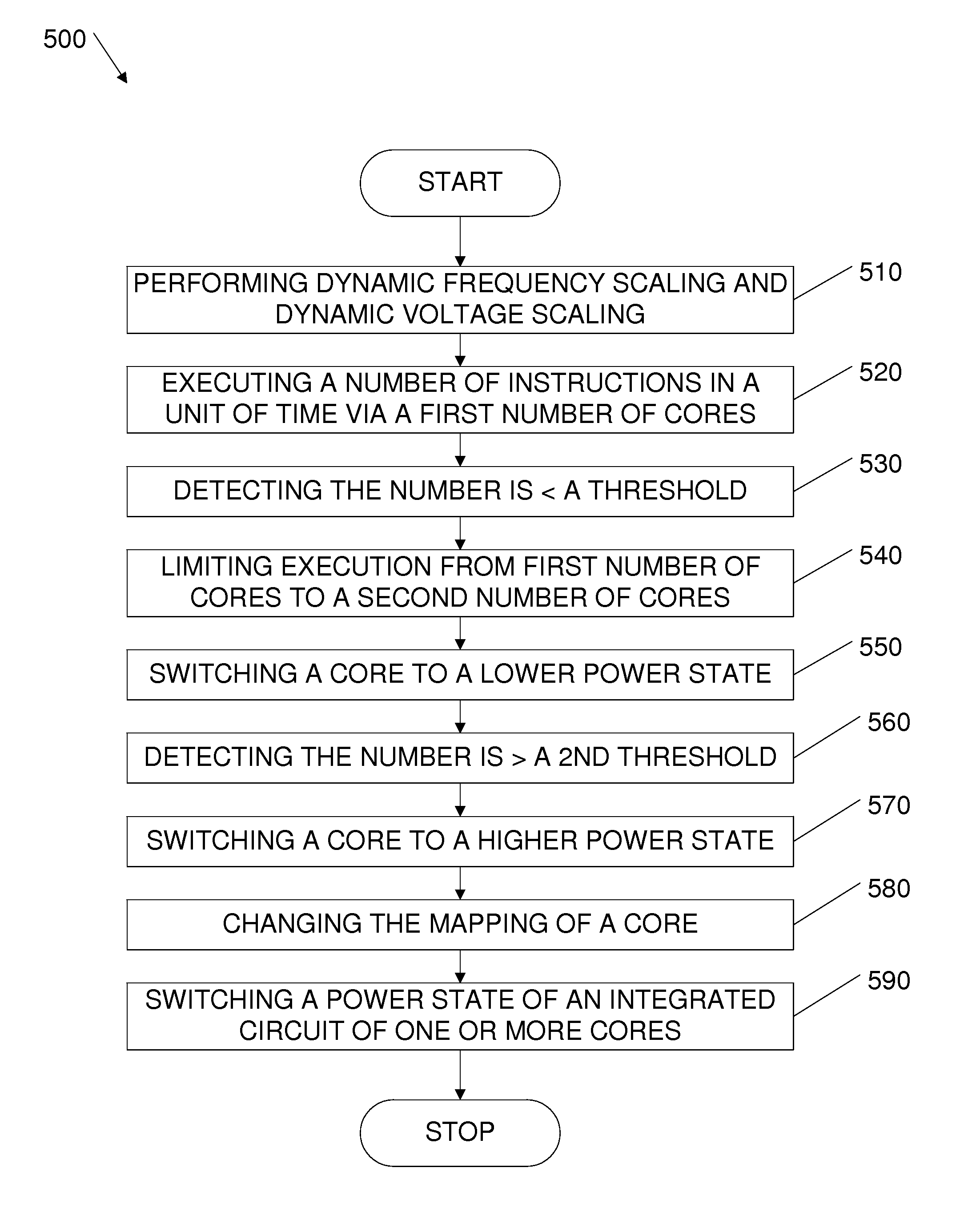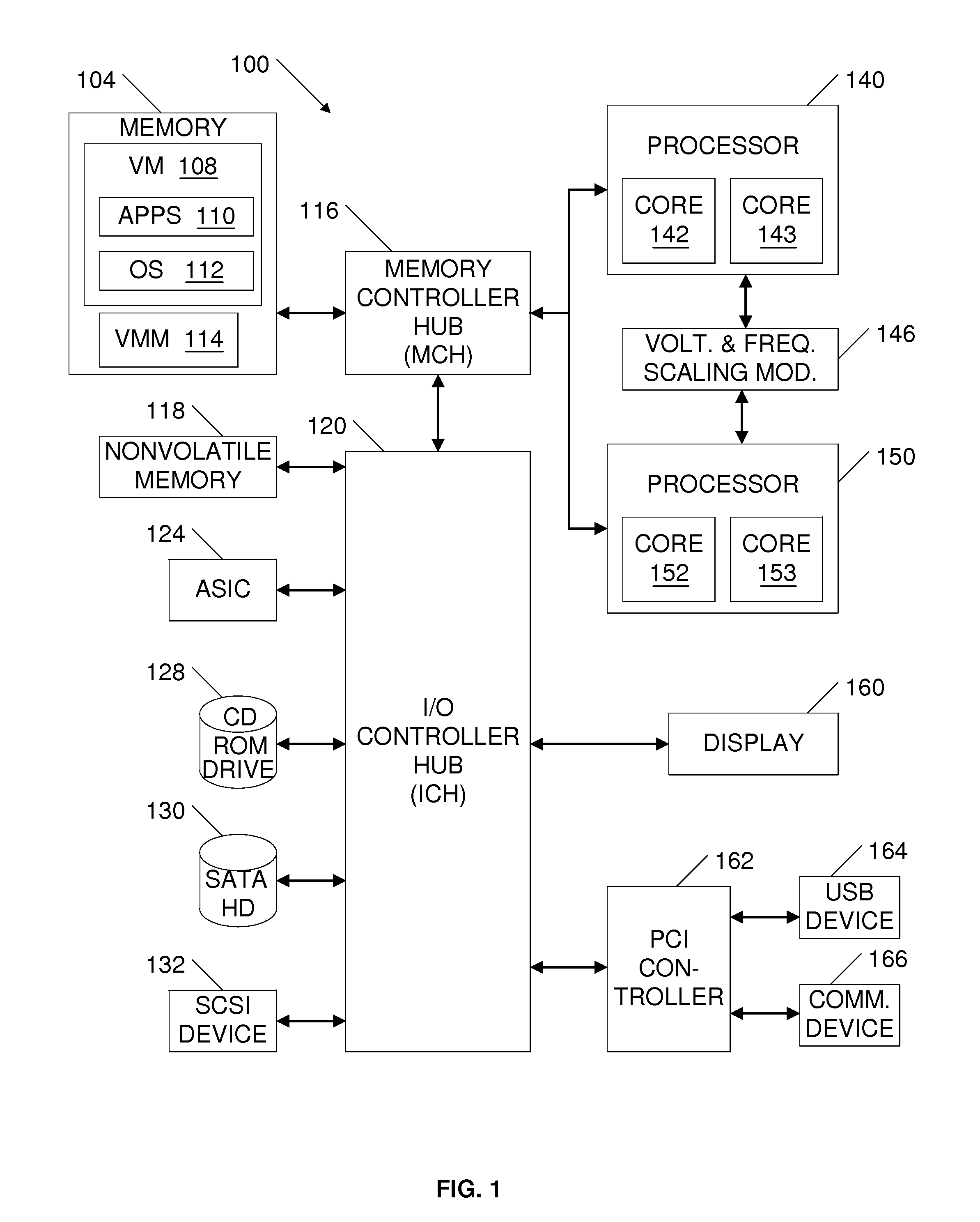Dynamic core pool management
a pool management and dynamic technology, applied in the field of computing devices, can solve the problems of inefficiency of current system-level power management elements, computing devices are not able to stay within design constraints and other limitations, and designers of computing devices, like next-generation servers, spend considerable amounts of time analyzing and designing system-level power management, etc., and achieve the effect of improving efficiency
- Summary
- Abstract
- Description
- Claims
- Application Information
AI Technical Summary
Benefits of technology
Problems solved by technology
Method used
Image
Examples
Embodiment Construction
[0017]The following is a detailed description of novel embodiments depicted in the accompanying drawings. The embodiments are in such detail as to clearly communicate the subject matter. However, the amount of detail offered is not intended to limit anticipated variations of the described embodiments. To the contrary, the claims and detailed description are to cover all modifications, equivalents, and alternatives falling within the spirit and scope of the present teachings as defined by the appended claims. The detailed descriptions below are designed to make such embodiments understandable to a person having ordinary skill in the art.
[0018]In many of the following paragraphs, numerous embodiments are discussed using the term “server”. The terms “computing device” are also used. Even so, the use of these terms is for the sake of explanation for those possessing ordinary skill in the art. The teachings herein may generally be employed with numerous types of computing devices that ha...
PUM
 Login to View More
Login to View More Abstract
Description
Claims
Application Information
 Login to View More
Login to View More - R&D
- Intellectual Property
- Life Sciences
- Materials
- Tech Scout
- Unparalleled Data Quality
- Higher Quality Content
- 60% Fewer Hallucinations
Browse by: Latest US Patents, China's latest patents, Technical Efficacy Thesaurus, Application Domain, Technology Topic, Popular Technical Reports.
© 2025 PatSnap. All rights reserved.Legal|Privacy policy|Modern Slavery Act Transparency Statement|Sitemap|About US| Contact US: help@patsnap.com



